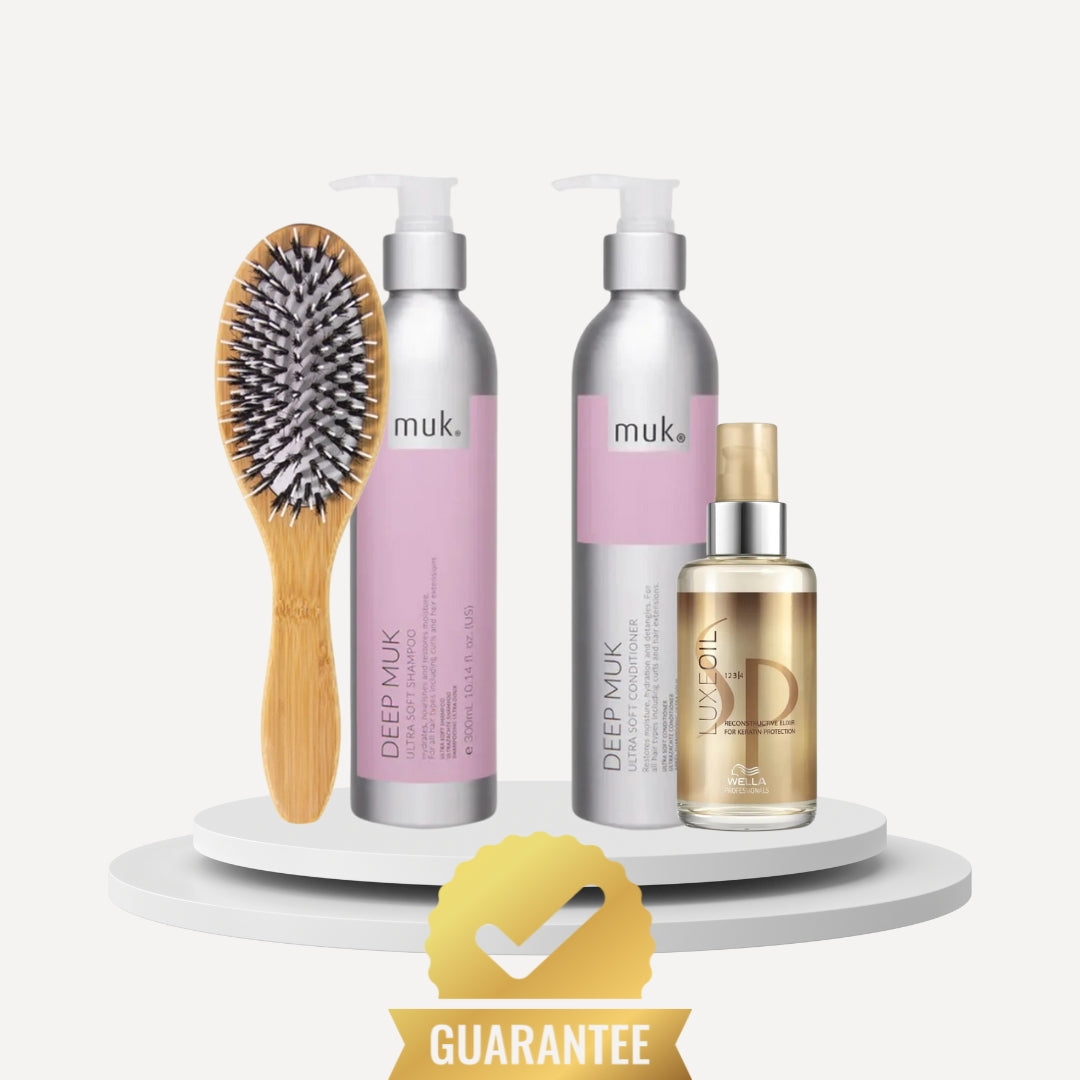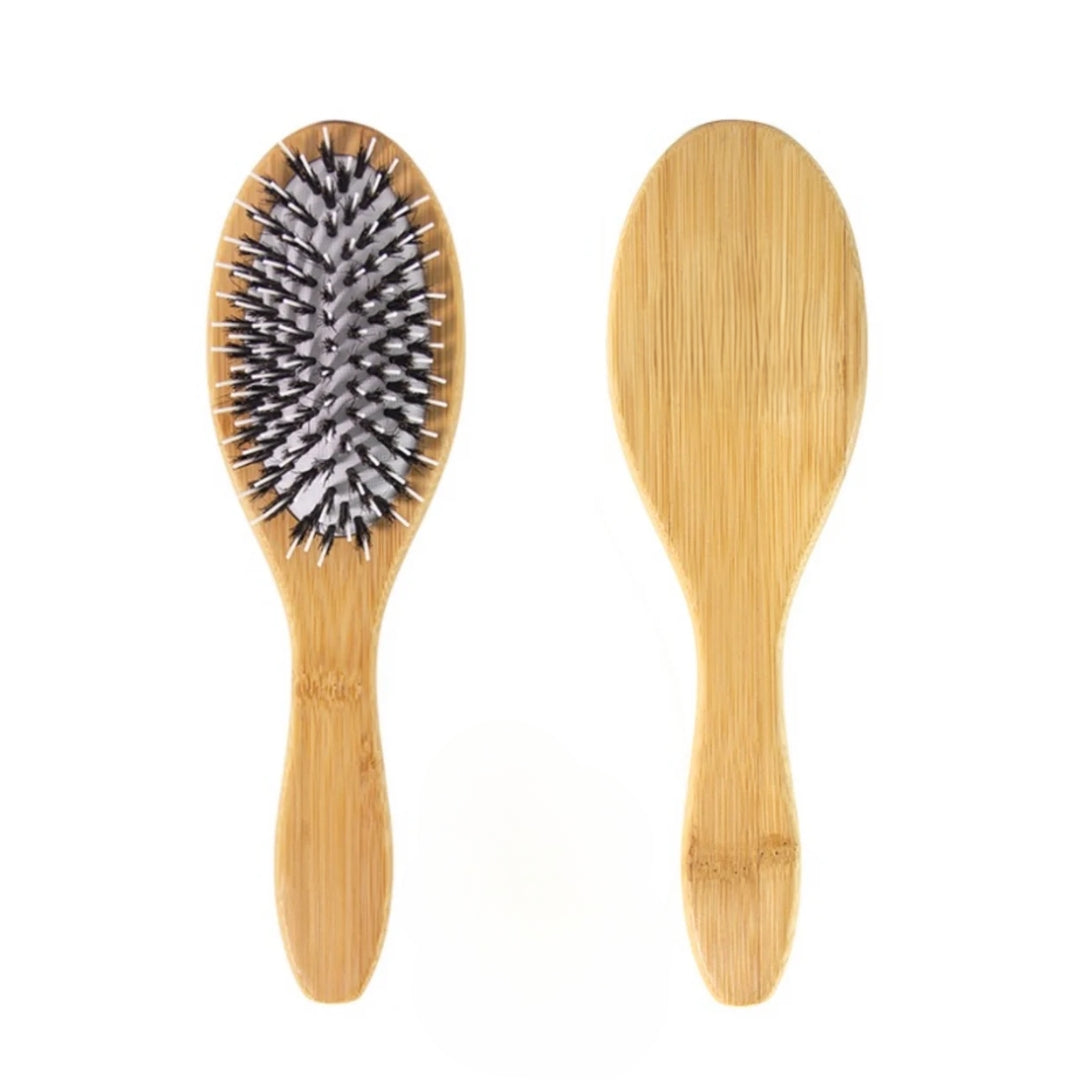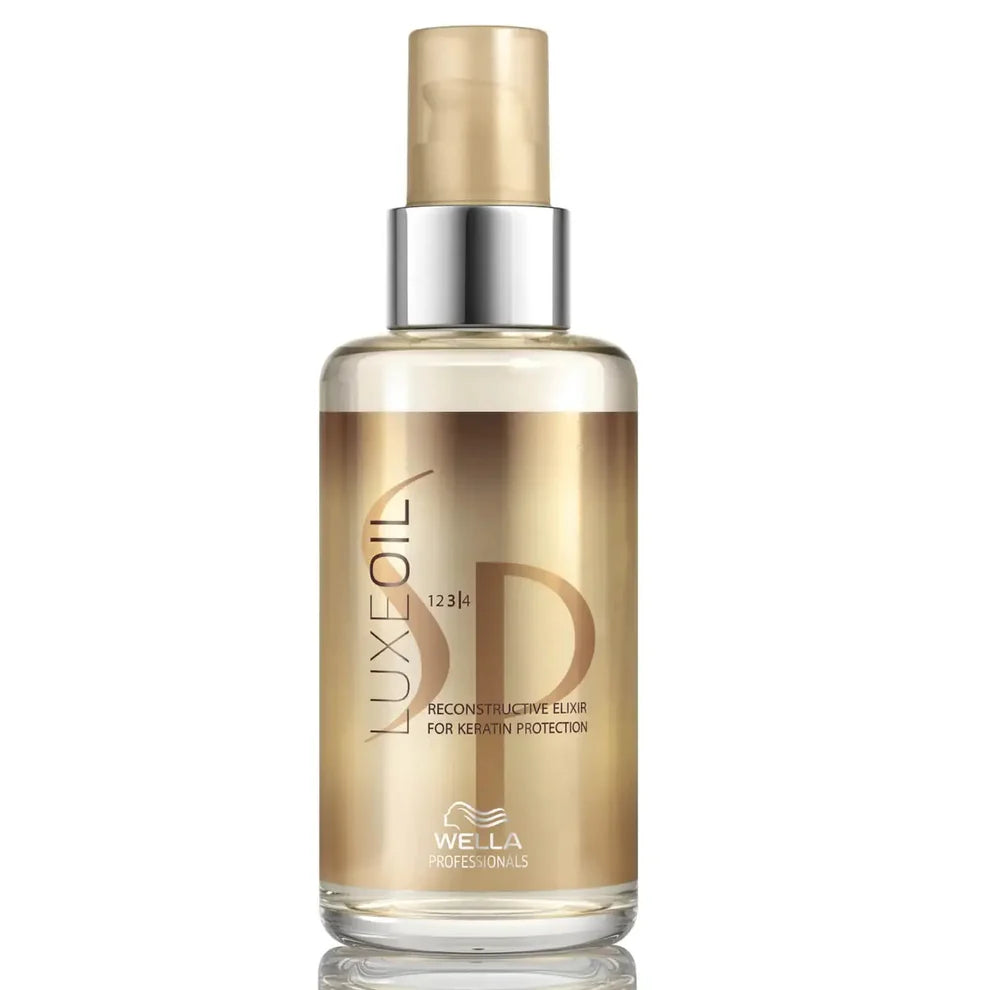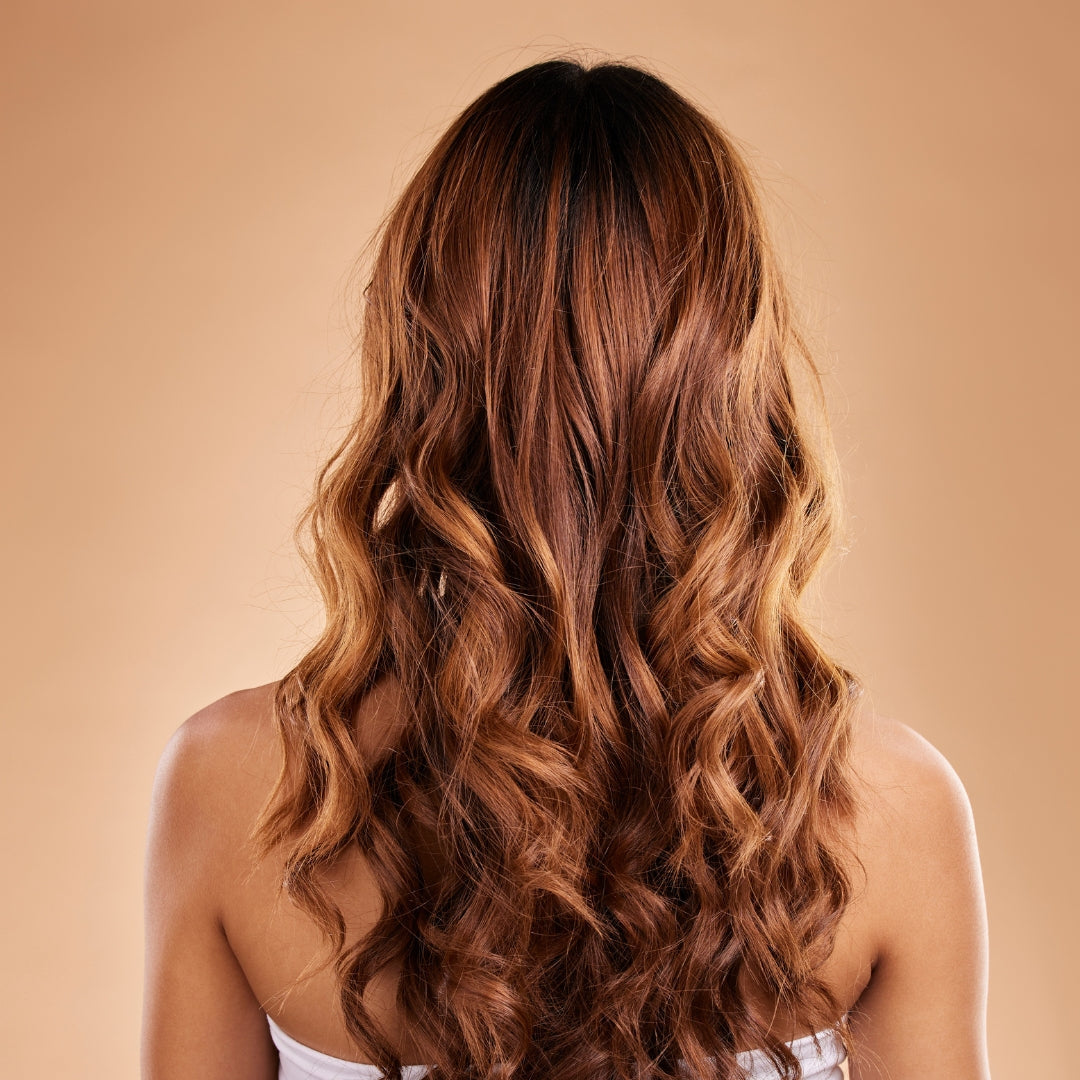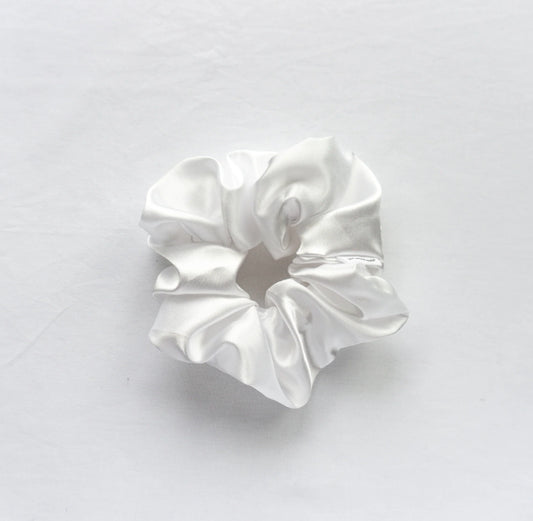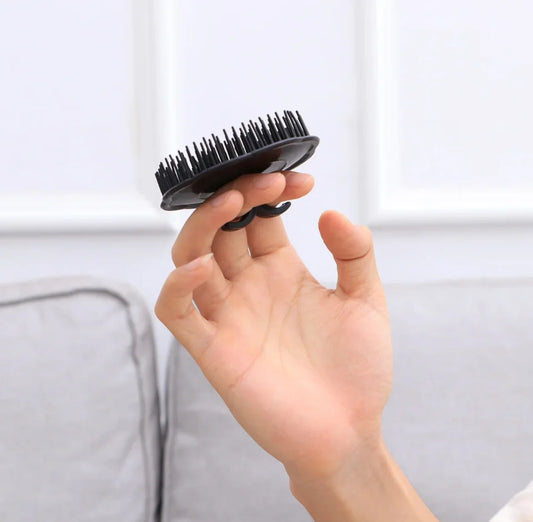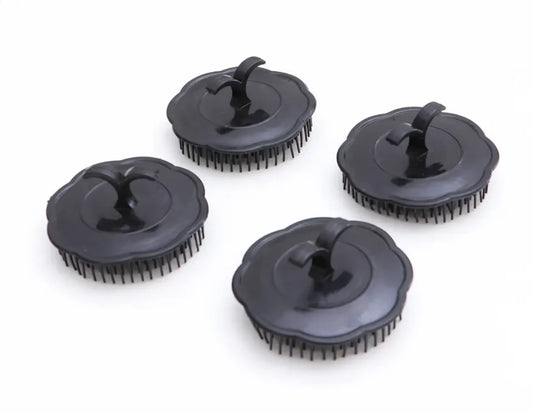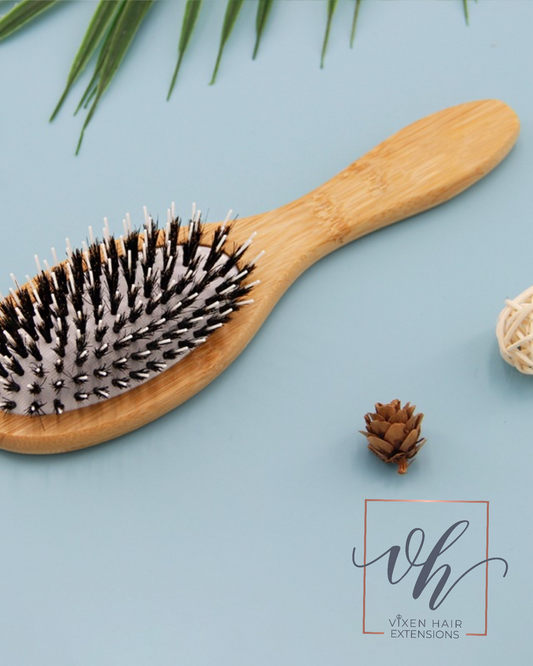Aftercare
The quality of products, and care practices used, directly impact the longevity and lusciousness of hair extensions.
See our full guide below.
-
100% Pure Silk Scrunchie
Regular price $9.90Regular priceUnit price / per -
Mulberry Silk Luxury Pillowcase
Regular price $34.95Regular priceUnit price / per -
Handbag Mini Hair Extension Brush
Regular price $2.50Regular priceUnit price / per -
Nylon & Boar Bristle Bamboo Extension Brush
Regular price $20.00Regular priceUnit price / per
Aftercare Guide
Maintenance
Most hair extensions must be removed and refitted every 6 to 8 weeks (tapes 4-6 weeks) by a qualified hair extension technician. This is absolutely vital to ensure minimal damage is done to your own hair and the extensions. Our advice is to ensure you rebook your next appointment with your Extension Specalist to ensure you don’t miss deadlines. Should this be missed, knotting and tangling can occur which means more hair loss / breakage. Although the odd late maintenance session causes minimal damage, reoccurring situations may result in traction alopecia and the inability to wear Hair Extensions moving forward.
Brushing / Separating
Always ensure you use a hair extension boar bristle brush to prevent excess tension on your hair extensions or natural hair when brushing.
Your hairbrush must not have balls on the end of the bristles as these can get caught in the bonds. Be gentle and hold the tops of the extensions while starting to brush any tangles from the bottom. Do not brush your hair extensions whilst wet as this will add extra pulling at the root, blast dry first to 80% dry, then use a brush to blow dry (always use Heat protection and the lowest setting on your hair dryer!).
For individual strand extensions (Ktips, Beaded methods), Ensure you are gently separating the strands / hair pieces regularly at the root with your fingertips to avoid any matting / fusing – if this happens, you should reduce the time between your maintenance sessions as this is product build up. You should also ensure hair in-between any weft lifes is brushed daily to avoid knotting / matting (tie each weft line up and work down the head). Natural hair sheds everyday (the average person loses around 100 hairs a day) so it is vital the bonds are separated so that matting does not occur between the extension and the natural hair.
Washing
Due to the required care needed when washing extensions, it is advised to try to reduce washing to 1-2 times a week if possible. Less washing will prolong the life of your hair extensions. Dry shampoo can be used to prolong periods of non-washing, however keep this product at the root rather than on the extensions as it will dry the extension out.
Brush your hair prior to washing to aid less tangling and damage within the washing process. Only use products designed for Hair extensions, these need to be hydrating as hair extensions are naturally dry products. These must be sulphate free (for individual strand methods), Paraben free (strips colour – the way hair extensions are colour is different ) and alcohol free (dries them out further). Some products can shorten the lifespan and quality of the hair extensions – if you notice a drastic change in quality of your hair extensions, stop using the products applied and seek another alterative. Always keep in mind that Hair Extensions are the genetic makeup of another human being (or multiple humans) therefore they may react differently to different products. When washing, do not rub the extensions as this may cause knotting. When applying conditioner, do not apply at the root. This can cause hair extensions to slip. Lightly press the moisture out of the extension with a towel after washing. Do not rub together the hair with the towel as this will cause knotting. Do not brush your hair went wet, read the brushing section on this.
Our recommendations are:
- Eleven Deep Clean: Use on roots only to remove product build up. This can remove colour quicker if used on the extension lengths.
- MUK Deep Shampoo & Conditioner: Designed specifically for hair extensions, these are great hydrating products
- NAK Replends Cream Leave-in Conditioner: A leave in conditioner that leaves the Hair Extensions soft and subtle
Suncream / Chlorine / Salt Water
Depending on your Daily activities (UV rays, Hard Water washing, Suncream, Chlorine, Salt Water exposure), Hair Extensions (particularly blondes) can become brassy, dry or discoloured. Don’t panic! We sell the below products which can help restore your extensions to better health.
Chlorine / Salt Water:
First of all, we recommend to avoid Chlorine and Salt water at all costs. Should you want to swim in the see or a chlorinated pool, it is advised that you follow the below steps:
- Thoroughly wet your hair in the shower (this water will penetrate the follicle)
- Apply a generous amount of NAK Replends Cream Leave-in Conditioner throughout the hair and extensions (this also penetrates the follicle and provides a barrier between the sale / chlorinate water)
- Tie your hair into a bun on top of your head (this protects the hair more)
- Try to keep your hair out of the water (prevention!)
If you do accidentally get salt water or chlorine in your hair, don’t panic. Wash it out immediately with Australian Eleven Deep Cleanse shampoo and add a generous amount of NAK Replends Cream Leave-in Conditioner whilst damp. Then blow dry. If it stil feels dry, add more NAK Replends Cream Leave-in Conditioner to the dry hair.
We provide a rescue kit sachet called Malibu C Swimmers Treatment which can be used to rescue your locks. We do recommend to take a couple of these sachets with you on holiday so they can be used if needed.
Suncream
Most sun creams have two ingredients (Avobenzone and octocrylene) which causes discolouration of lighter hair extensions (usually it is a pink or orange tinge). Although we don’t generally apply sun cream to the scalp, if sun cream is applied to the shoulders and hair extensions are left down, they can absorb the two ingredients into the follicle. The pink tinge will develop over time. We recommend La Roche Posay Anthelios Invisible Fluid SPF 50+ as a suitable option to avoid these ingredients. Hardwater Depending on where you live, you may have
Hard Water
This can cause havoc for your hair extensions. We strongly advise that you run a test on your water supply. You can do this following the instructions from the Brita water filtration site by clicking here. Hard water can cause the following issues:
- Colour Fading: The sulphates in hard water can cause coloured extensions to fade and turn brassy, orange, or pink.
- Dullness: Mineral build-up from hard water can make extensions look dull and lifeless.
- Brittleness: Hard water can strip hair of its natural oils, making it dry and prone to breakage.
- Tangling: Hard water can cause hair to become tangled and matted.
- Difficulty Styling: Hard water can make it more difficult to style extensions, which may not hold a style or may resist styling altogether.
Should you find that your water shows the presence of minerals, follow these simple steps:
Here are some tips to protect your hair extensions from hard water:
- Install one of our Shower Filters
If you do not invest in a shower filter, follow these steps:
- Use Malibu C Hard Water Wellness Shampoo & conditioner regularly to remove mineral buildup (please note that this will remove colour from your hair extensions quicker)
- Use Malibu C Hard Water Treatment every other wash to intensify removal.
- Use NAK Replends Cream Leave-in Conditioner to protect against drying Deep NAK Replends Cream Leave-in Conditioner and Wella Luxe Oil regularly on dry hair to replenish moisture and nutrients
- Avoid excessive heat styling – reduce tools to the lowest heat possible and use NAK protection spray
- Rinse with filtered or distilled water after washing or use filtered / distilled water to wash (we recommend Brita Water Filter Jugs)
Heat Appliances
Heat appliances such as straighteners, hair dryers or curling tongs are fine to use however, overuse can cause drying, breakage and quicker colour fading – particularly when heat protection isn’t used. We recommend our heatless curlers which can be applied over night and provide a beautiful natural curl without heat! Win win! When using heat tools, avoid the top of the extensions as this can damage and melt the bonds (causing fall out or damage to natural hair via bond residue). Always use heat protection spray and remember that the longer between maintenance, the further down the bond will be.
Sleep
The hair must be tied into a loose plait to sleep - this avoids matting at the bonds and tangling of the lengths. Do not tie your hair up on to the top of your head to sleep. This will cause matting on the bottom rows of your extensions due to friction and tension as the follicle is being pulled in the wrong direction and then rubbed on the pillow. We recommend the use of our 100% Mulberry Silk Pillowcases as these helps to reduce tangling. Due to the softness of the material, the hair slides across the surface. Silk pillows have many other health benefits too including skin benefit. Never go to bed with wet hair – germs from your pillowcase will harbour in wet humid hair and cause scalp issues.
Colouring Hair
We only provide the highest grade of her extension at Valancia Hair. This means that the hair can be coloured if desired. However, it is ESSENTIAL that this is done with a trained professional who understands the delicacy of Hair Extensions and what level of products to use which will reduce damage. Colouring is recommended on occasion as it does reduce the life of hair extensions if done on a regular basis.
Your own hair can be coloured whilst the extensions are in, as long as the chemicals do not touch the tips or bonds of the extensions. We advise you only have your T section coloured where necessary to avoid risking the accidental colouring of your hair extensions. It is always recommended to have your hair extensions applied to a n atural root. Applying hair extensions to bleached roots may cause breakage. Therefore only bleach your T-zone to the root and ask your specialist to start lower on the inner sections.
Premium Guarantee Aftercare Bundle
Share
